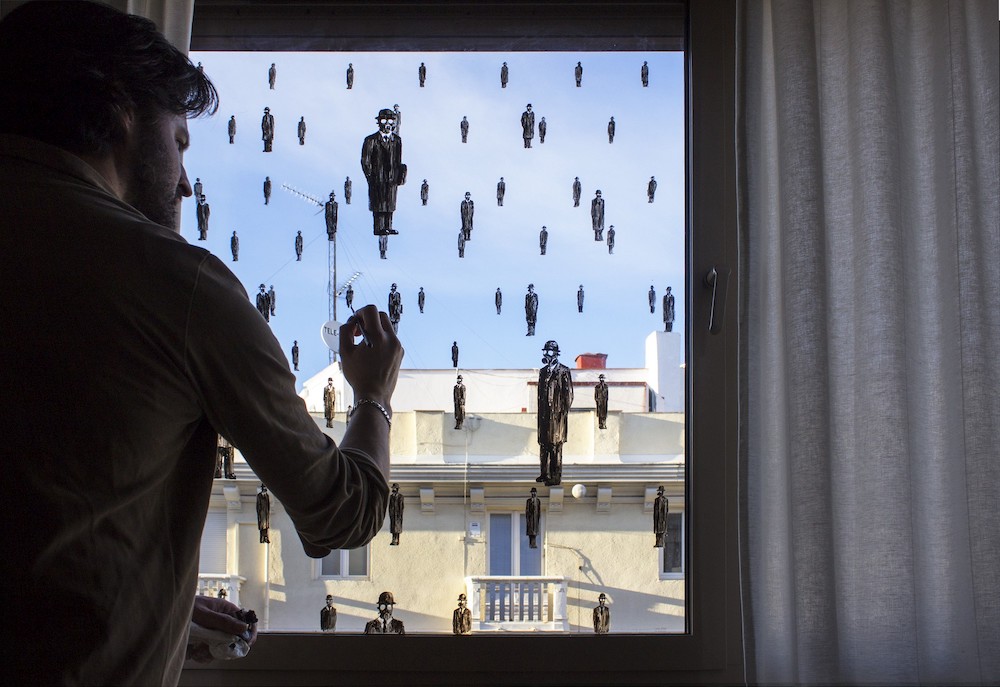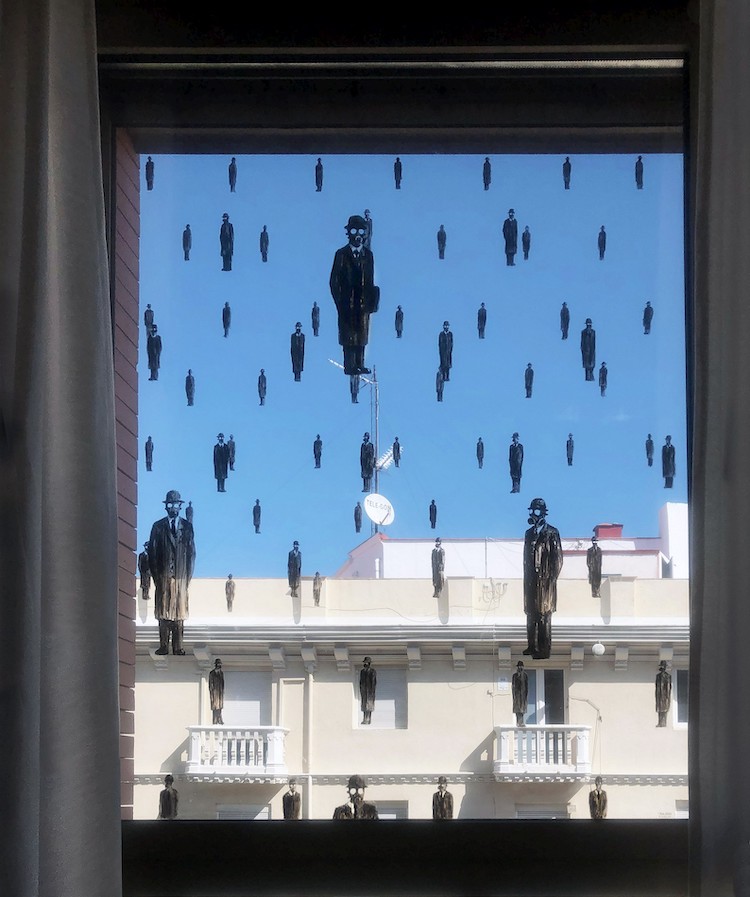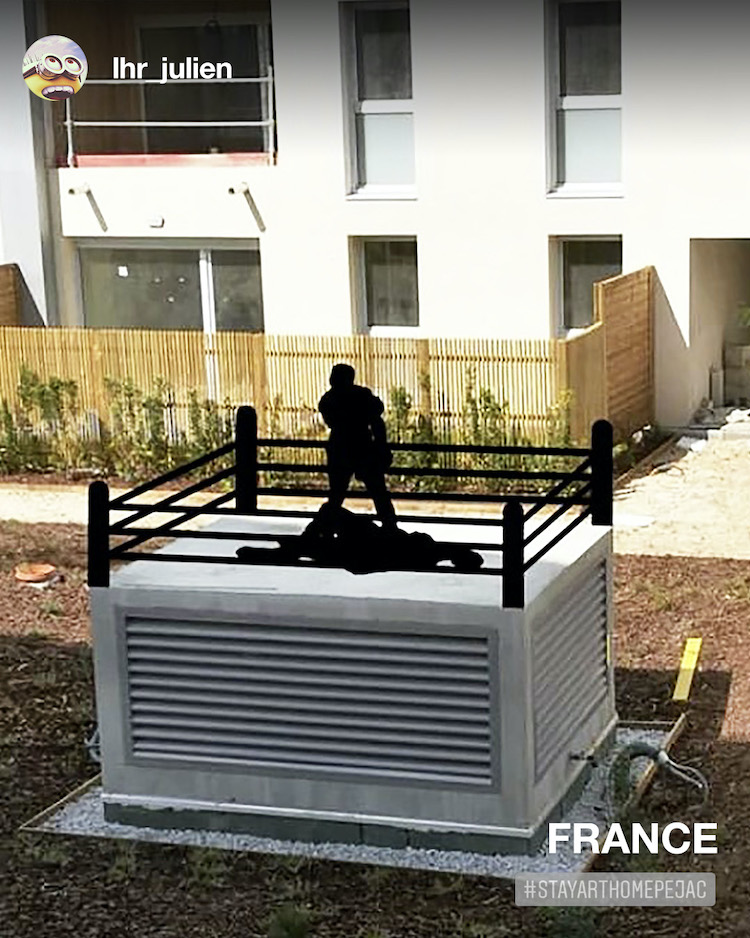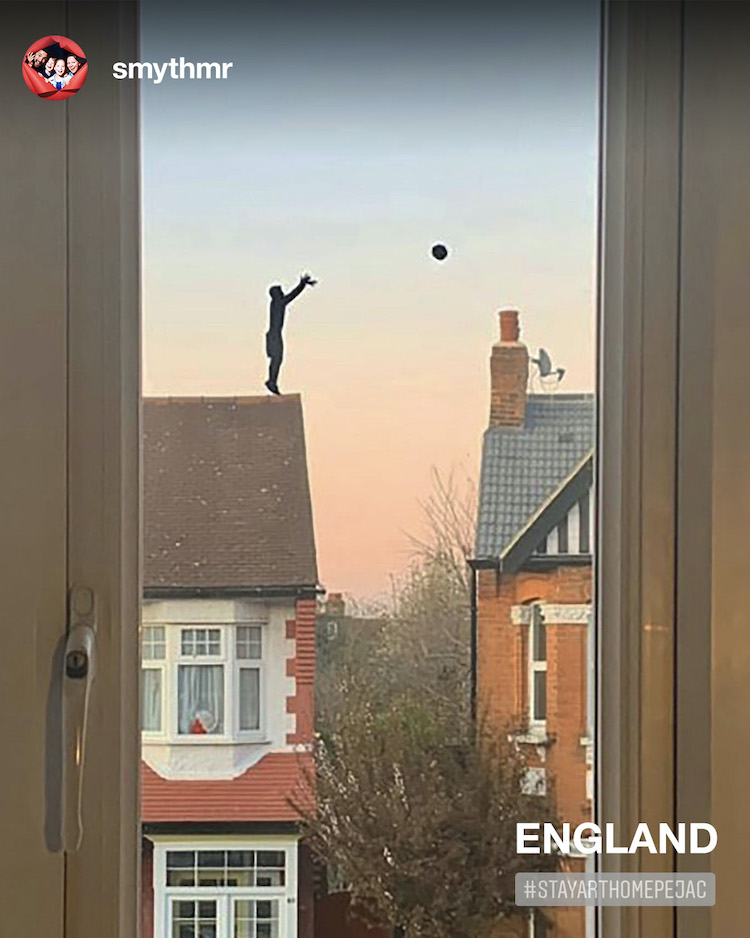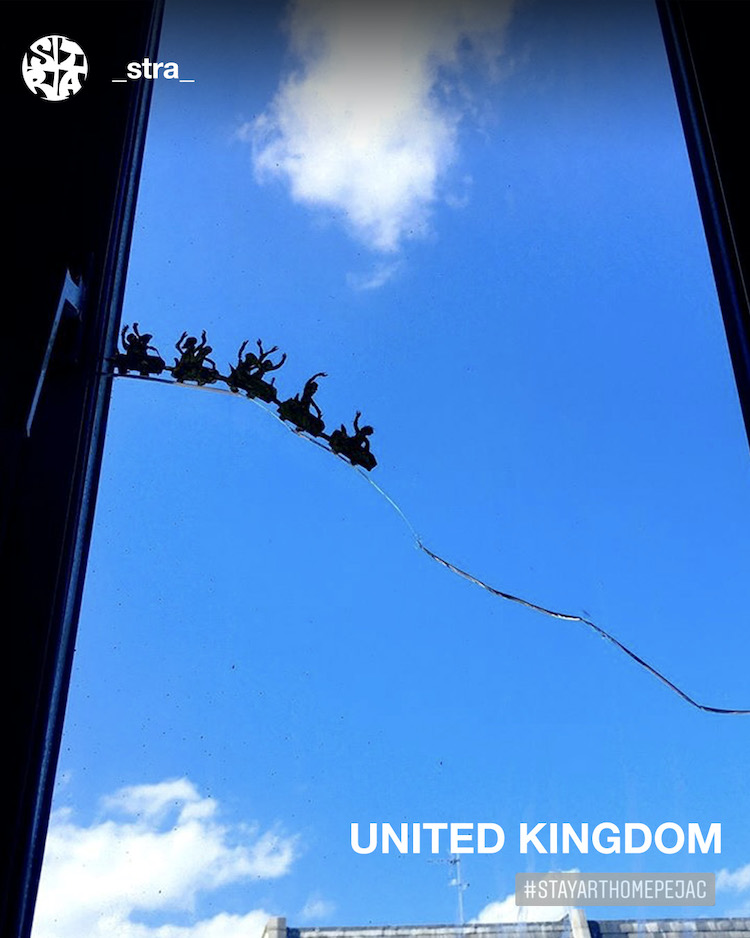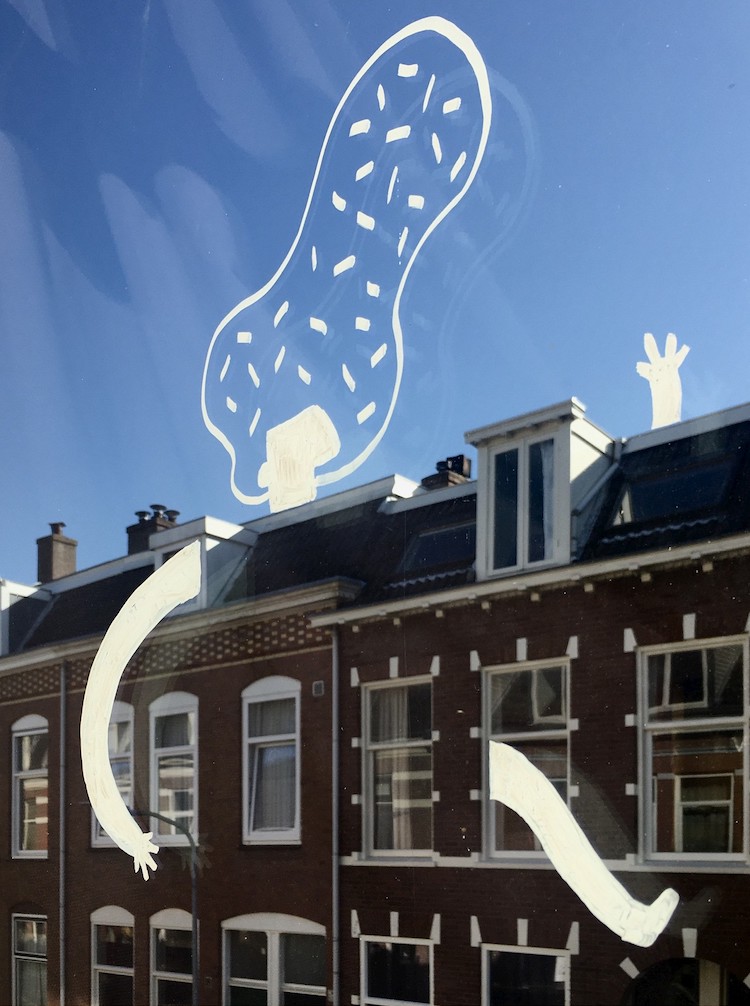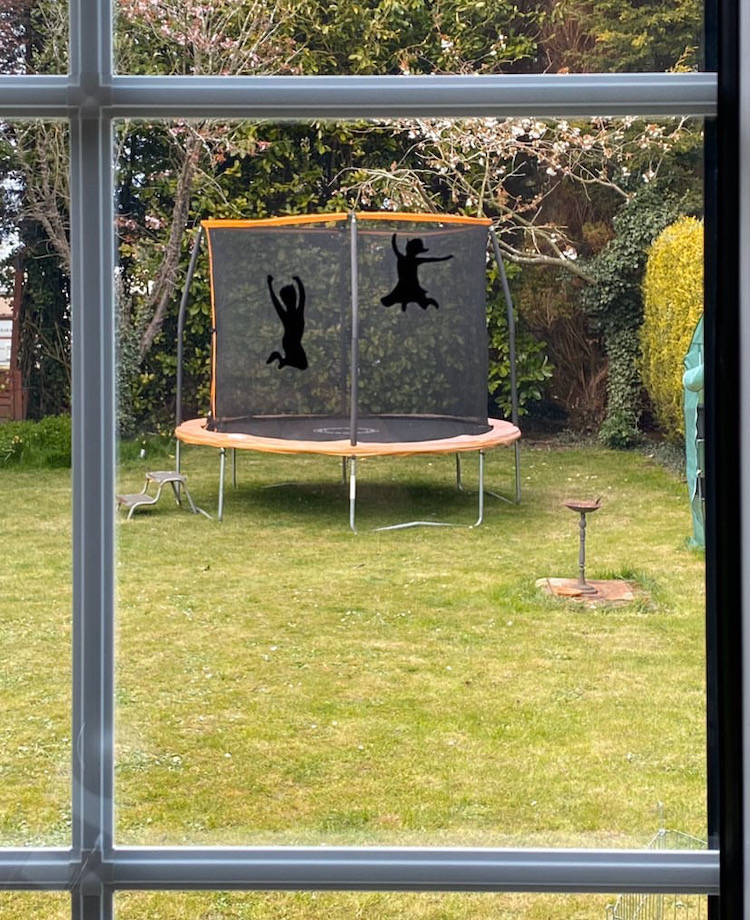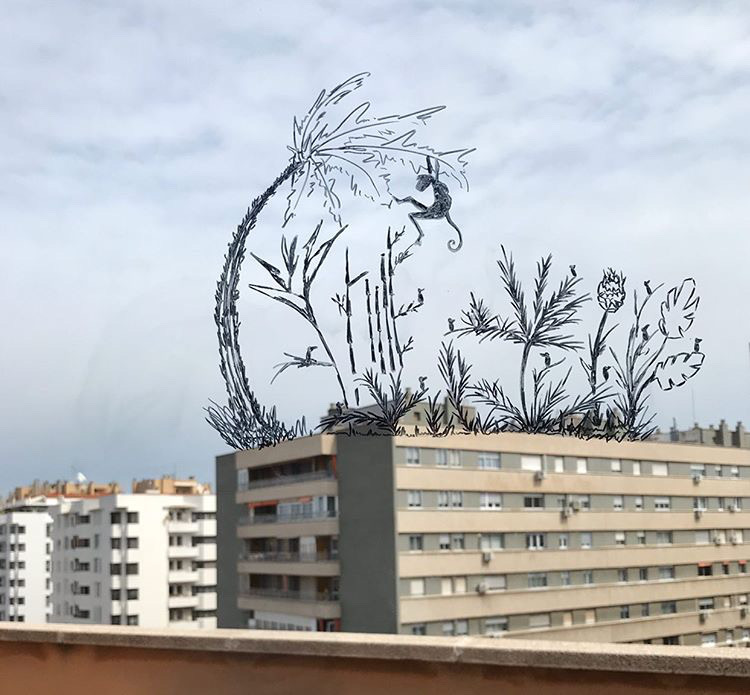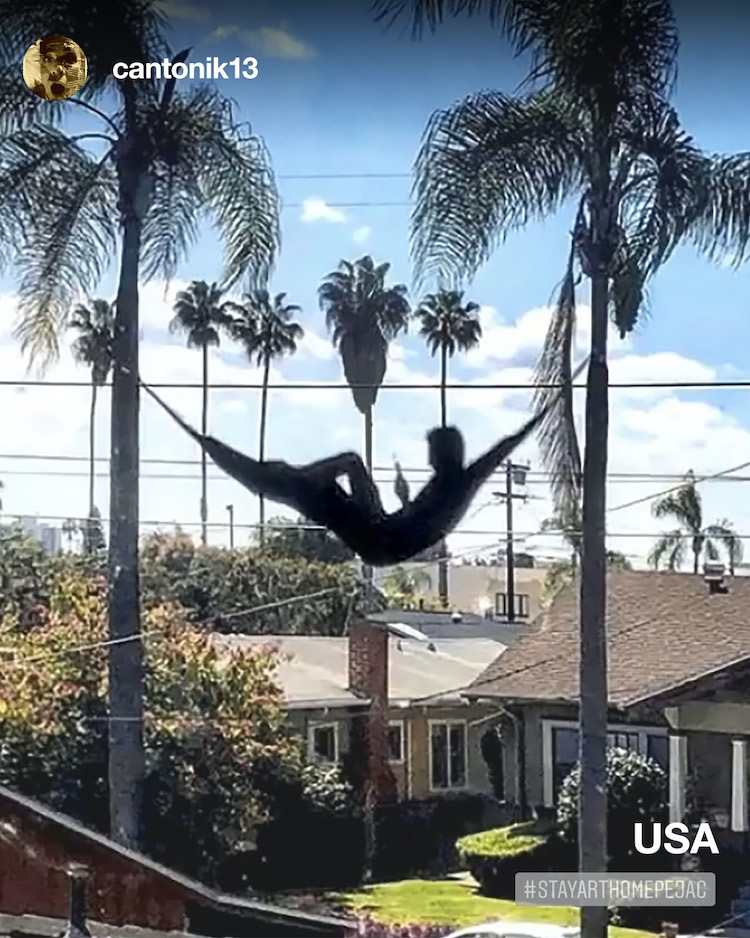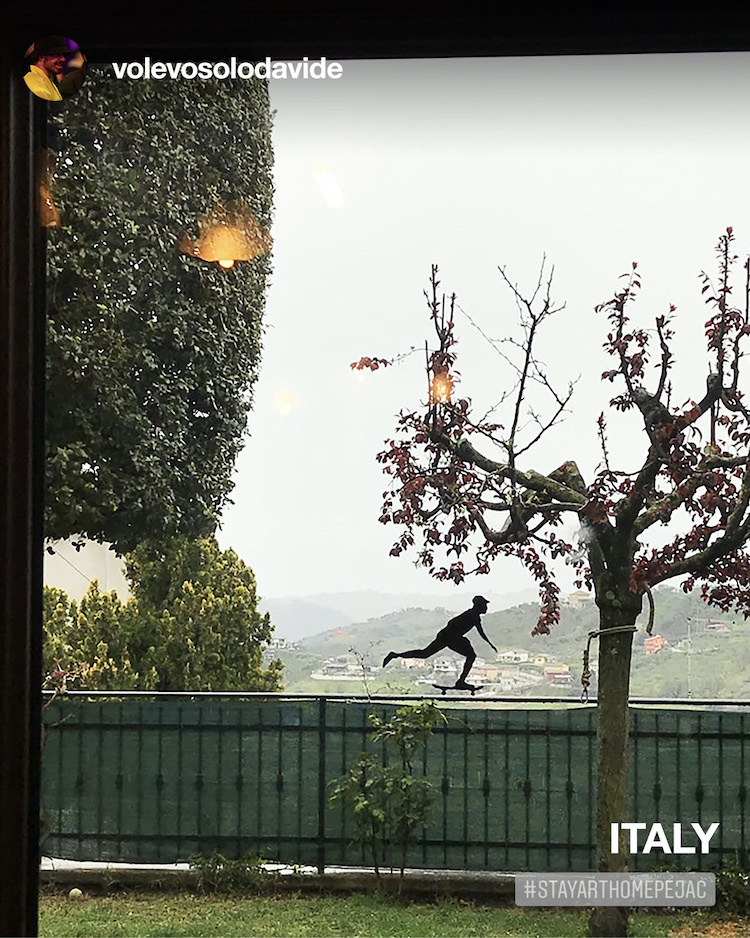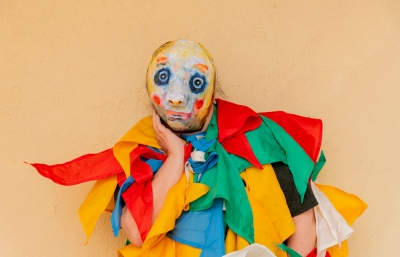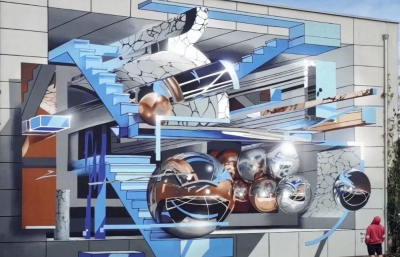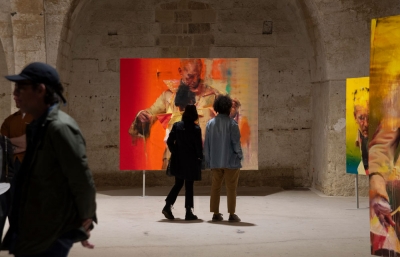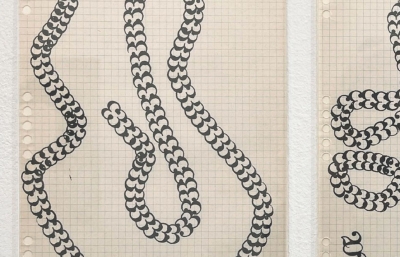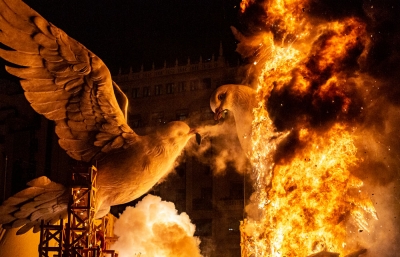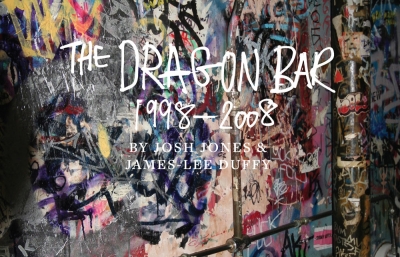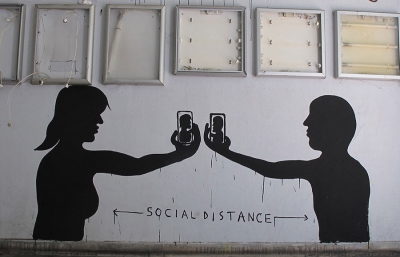It was back in 2014 when Pejac shared his most personal works with the public for the first time—miniature silhouette drawings that invite engagement through a window to the world beyond. Conceived a full decade ago, when living in Valencia, he created these unique urban interventions in the privacy of his living room, works that display a keen and empathetic perception of surroundings, as well as the humble, yet powerful, nature of his artistic practice.
Fast forward to 2020 and the blue planet on lockdown, the artist recognized a fitting opportunity for resurrection of his opus. As a way of enduring tough times in his hometown of Madrid, Pejac recently revived this simple concept in order to proclaim the healing powers of art. With half of the world confined to their living space, often without emotional or creative outlet, he launched an initiative on social media to raise international awareness about the individual responsibility to band together and strengthen well-being through global empathy.
Through #StayArtHomePejac campaign, Pejac invites all of us to join him, explore creativity, and make urban art from the safety of home, inspired by life outside our windows as a living source of artistic awakening. His simple tutorial demonstrates the ease of getting creative at home, and after only a few days, the public response has been overwhelming. Hundreds of submissions have already been sent from more than 20 countries worldwide, including Spain, Italy, France, Germany, Turkey, USA, Vietnam, Iran, India, Brazil, among others. What a poetic way to stand up to the virus.
Spurred by the creativity of others, the artist stepped up his own game with another tribute to one of his favorite artists, René Magritte. Four years since his radical intervention Camouflage (Tribute to René Magritte) created on the windows of an abandoned factory in Croatia, re-interpreted the oeuvre of the iconic Belgian surrealist. Using the neighboring building across the street as background, Pajac's updated version of Golconde from 1953 features "raining men" dressed in dark overcoats, bowler hats, and wearing gas masks. Titled It Can’t Rain All the Time (a line from the movie The Crow), the post apocalyptic image serves as a hopeful glimmer of light at the end of this long tunnel. —Sasha Bogojev


